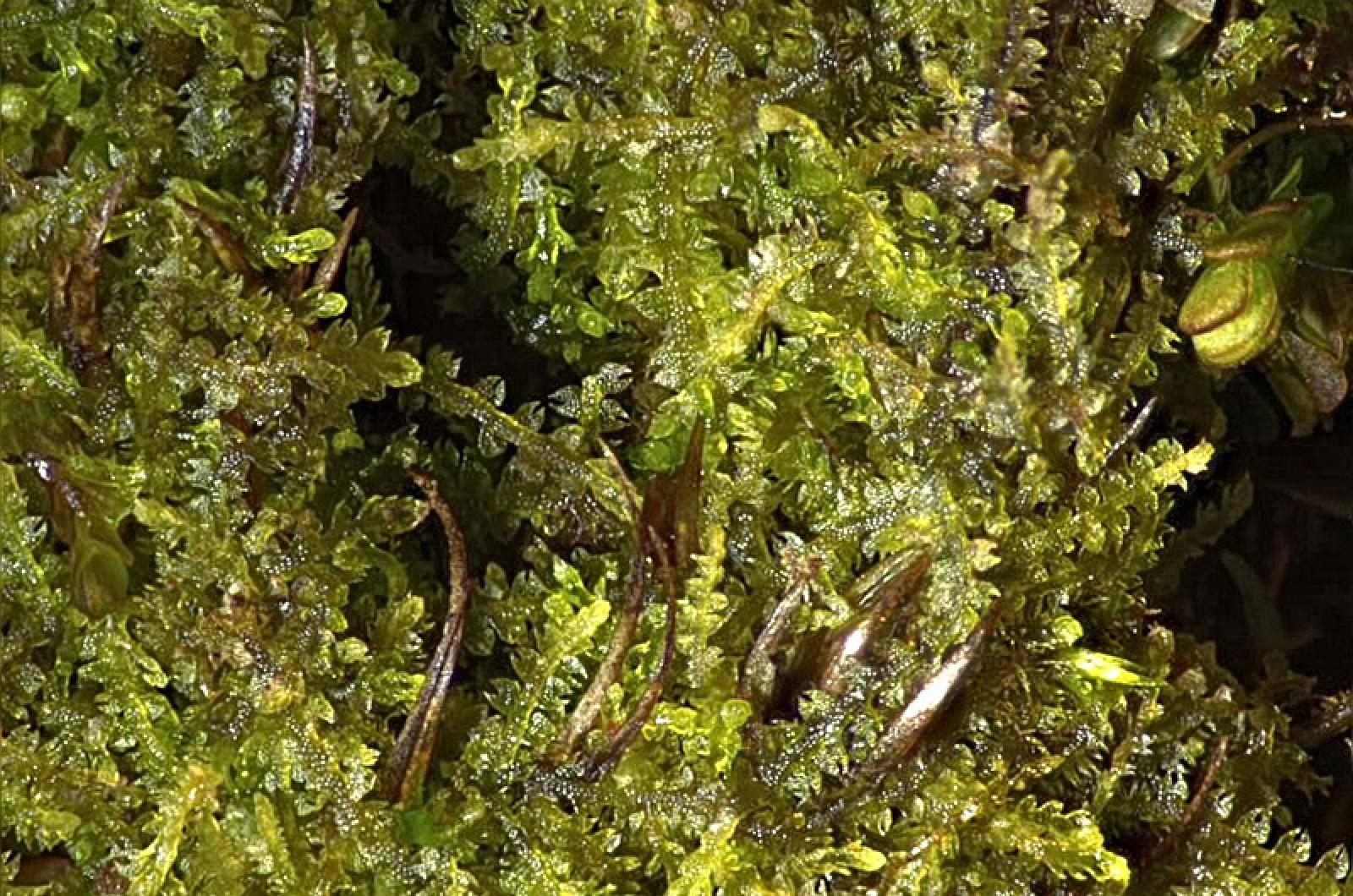“Need a fact or quotation on liverworts?”
It sounds like a strange question to most but, yes, in fact, I do need a fact or quotation on liverworts. And I must not be the only one who does. That question came from a writeup for a book, curiously titled Liverworts: Webster’s Quotations, Facts and Phrases. Clearly it is a book I must have.
Liverworts may be an underserved topic to most folks but to Greg Palermo and Margaret Curtain, they are fascinating and worthy of search and study. These two flora fanatics recently discovered a liverwort species not before described on the Island.
The duo noticed cephalozia catenulate, with the common name chain pincerwort, growing on a rotten log in Edgartown. Greg described the leaves of this species as Pac-Man shaped, and they shared the fact that it is also known by a different scientific name.
This secondary nomenclature, fuscocephaloziopsis catenulate, is a mouthful. Greg has an opinion on this tongue-twisting title: “Ordinarily, I find long scientific names mildly irritating but this one is so preposterously long that I rather like it. It makes me feel smart to be able to roll 13 syllables off my tongue without stumbling (but I confess that I had to practice).”
With about 9,000 species, liverworts are not rare, though are often overlooked. These small plants appear as green coverings on rocks, logs and soil, though should not be confused with lichen, which is an entirely different beast. One similarity is that both can and do serve to decay and break down their hosts, be it rocks, soil, or wood.
Greg and Margaret are on a quirky quest, to find and describe bryophytes for Polly Hill Arboretum. Bryophytes are a group of nonvascular plants that include mosses, liverworts and hornworts. Nonvascular describes the lack of roots and vascular tissue. They overcome this limitation by getting nutrients and water through their leaves. Liverworts also lack seeds, fruit and flowers, so they reproduce via spores.
This group has been underrepresented in the Island’s naturalist circles. With only 41 liverworts documented prior to this recent effort, it is time to get these simple, single cellular plants back into the limelight. Though perhaps not popular, liverworts are historic with fossil records going back 400 million years.
The name liverwort translates to liver plant and describes the liver-like shape of the plant body, or thallus, and the early belief that the plant could support liver health. Another name for this group is hapaticae or hepatics. You might recognize the etymological similarity to hepatitis, a disease of the liver.
I am intrigued by the existence of that book and might have to have our local bookstores or library order me a copy — though I wouldn’t suggest multiples as I don’t expect it to be an Island best seller, even with this recommendation. Until I get my hands on a copy, I am, sadly, bereft of quotes, idioms and other liverwort linguistics. And since Margaret and Greg will likely find more species to describe, I will need that source for spreading liverwort love and honoring hepatic history.
Suzan Bellincampi is Islands director for Felix Neck Wildlife Sanctuary in Edgartown and the Nantucket Wildlife Sanctuaries. She is also the author of Martha’s Vineyard: A Field Guide to Island Nature and The Nature of Martha’s Vineyard.







Comments
Comment policy »